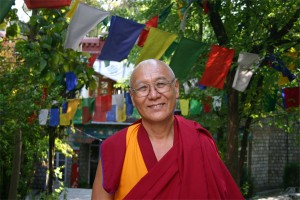Ever wanted to take action for Tibet but don’t know where to start? Australia Tibet Council works alongside the local Tibetan community to promote the human rights and democratic freedoms of the Tibetan people and encourage a peaceful and lasting solution to the Tibetan situation. Whether you have one minute or one hour to spare a day, there are many simple but effective things you can do to help. This workshop will be an opportunity to meet others who care about Tibet and will introduce participants to some of the ways we can all help create a better future for the Tibetan people.

 Born in Kardze in eastern Tibet in 1937, Kuzho Lama, Geshe Tashi Tsering has devoted his life to studying and practicing Buddhism and to conveying the essence of the Buddha’s teachings in cogent, powerful ways. He draws from an unbroken lineage of authentic teachings and presents them in a way that is relevant and highly meaningful to modern life. In Seed of Compassion: The Art of Happiness, Kuzho Lama will discuss the essence of Buddhist psychology which is deeply rooted in the ideal of compassion. He will explain the means for making our minds more positive in order to find happiness in this modern age.
Born in Kardze in eastern Tibet in 1937, Kuzho Lama, Geshe Tashi Tsering has devoted his life to studying and practicing Buddhism and to conveying the essence of the Buddha’s teachings in cogent, powerful ways. He draws from an unbroken lineage of authentic teachings and presents them in a way that is relevant and highly meaningful to modern life. In Seed of Compassion: The Art of Happiness, Kuzho Lama will discuss the essence of Buddhist psychology which is deeply rooted in the ideal of compassion. He will explain the means for making our minds more positive in order to find happiness in this modern age. “Climate Change on the Roof of the World: Why Tibet Matters†will bring together five of Australia’s most eminent researchers, campaigners and spokespeople on Tibet for a fascinating live discussion set to shed new light on the importance of Tibet to the future of our planet. The panel will explore the tremendous significance of Tibet, the earth’s “Third Poleâ€, to the global environment and why the Tibetan people and Tibetan culture are a critical part of the solution to environmental challenges afflicting China, Asia and the wider world.
“Climate Change on the Roof of the World: Why Tibet Matters†will bring together five of Australia’s most eminent researchers, campaigners and spokespeople on Tibet for a fascinating live discussion set to shed new light on the importance of Tibet to the future of our planet. The panel will explore the tremendous significance of Tibet, the earth’s “Third Poleâ€, to the global environment and why the Tibetan people and Tibetan culture are a critical part of the solution to environmental challenges afflicting China, Asia and the wider world.